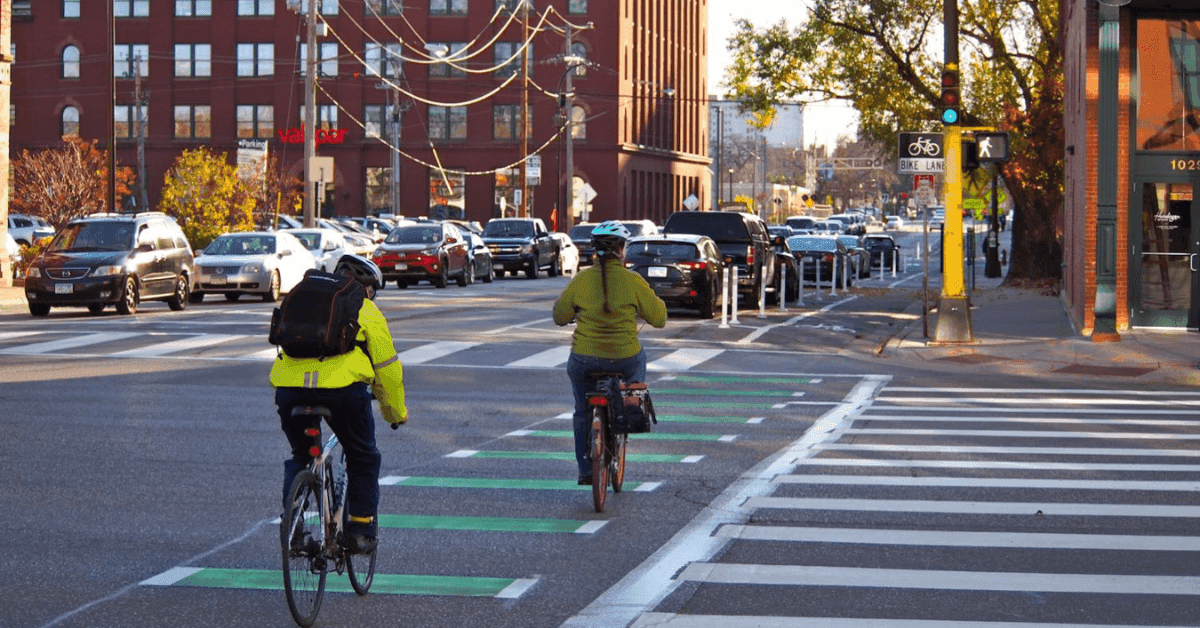
News
By Courtney Cole, September 30, 2024
Started in 2021 by author and Director of the Disability Mobility Initiative Anna Zivarts as a Washington state based campaign, the Week Without Driving challenge illuminates the ways our current system is failing, and encourages us to envision a system that works better for everyone. With the support of America Walks, Week Without Driving has now expanded into a national effort and is happening September 30th through October 6th this year.

The fact that our environment is built to cater to cars bolsters the misconception that driving works well as the default option for everyone to get around—but that just isn’t true. Driving is expensive, and around one third of Americans can’t or don’t drive. Even people who drive regularly and enjoy it would benefit from having other options from time to time, like when their car breaks down, when they have medical reasons not to drive, or when the weather is nice and they want to take a stroll.
Even more important than all of this is the fact that designing roads primarily for vehicle speed puts everyone—in and outside of cars—in serious danger. In 2022, over 42,000 people were killed in motor vehicle traffic crashes, 7,500 of whom were pedestrians because our road design prioritizes moving cars quickly at the expense of the safety of humans in and outside of cars.
On top of this, a staggering 83 percent of greenhouse gas emissions related to transportation came from cars and trucks in 2020—driving a continued increase in overall emissions that innovations in fuel efficiency and electric vehicles just can’t keep up with. This pollution has devastating impacts on our planet and bodies.
The reality is that our car-centric system isn’t the best option. It limits where people can live, forces people to be dependent upon costly machines, and has severe environmental consequences that are detrimental to our natural resources and physical health. We build our places for cars instead of people, and that needs to change.
So what can we do about it? That's how Week Without Driving comes in.
Created by Anna Zivarts, a low-vision parent, non-driver and author of When Driving Is Not an Option: Steering Away from Car Dependency and growing from a Washington State-based campaign to a national effort, the Week Without Driving challenge highlights the barriers and limitations our current infrastructure system creates, and generated conversations about a more equitable future for our transportation system.
Week Without Driving participants have ranged from parents to students to elected officials. Whether people participate for one hour or the entire week, it has proven to be a unique and valuable learning experience. It allows leaders and decision-makers to see opportunities for improvement in their communities, and brings people together around something that is important to all of us—getting where we need to go efficiently and safely.
This effort isn’t about who is the “best” at not using a car—it’s about what we can learn about the shortcomings of our infrastructure. Successful participation in Week Without Driving could include taking one more trip using a bike or public transit than usual, or giving up all things car-related from personal vehicles to rideshare.
Anyone can be a part of Week Without Driving. Sign yourself or your organization up to participate here. For more Week Without Driving content, follow us at @CompleteStreets on Twitter/X and @SmartGrowthUSA on Twitter/X, Instagram, and LinkedIn. No matter how you participate, we hope you have an opportunity this week to reflect on the travel options you’d like to see in your community.
Related News

© 2025 Smart Growth America. All rights reserved
Site By3Lane Marketing












